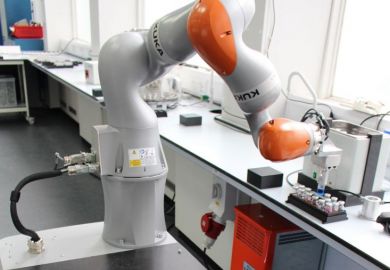The author of this book, Philip Ball, has already written a number of popular science books and is senior editor for physical sciences with Nature , the leading journal that publishes interesting previews of current science, predominantly biology and astronomy. Nature has an unusual practice whereby lots of these previews are rejected by one of the editors, with no advice from expert referees - a practice that gives the editors unusual power.
This is a lengthy book, but it contains a large number of quotations, mainly historical and often biblical, and also a large number of black-and-white illustrations.
There is lots of history, especially of the broad scientific background to water. Much of this is geology and astronomy, but written very much at a popular level. It leads up to the present day, with water pollution problems, and includes a reference to a recent report by Unesco that apparently suggests there will soon be a world shortage of water - notwithstanding the vast reserves of seawater, which is not difficult to purify.
There is also an interesting account of the so-called "greenhouse" effect. Ball stresses that, as well as carbon dioxide, water vapour is a key gas, but that the normal trends from hot ages to ice ages will totally overwhelm the greenhouse effects, good and bad.
He then moves on to the basic physics of the H2O molecule, and how its key property is to form strong hydrogen bonds. These are sweetly depicted as spherical kids holding hands. This leads to a consideration of ice and the fact that each molecule forms four
of these hydrogen bonds, making the ice very strong, but also remarkably light because, unusually, a lot of empty space is involved for ice to form.
He tells us about the 13 different forms of ice so far discovered. But most of these are very esoteric, requiring extreme conditions of pressure and temperature for their formation. This leads to a discussion of snow flakes, and the beautiful patterns of ice crystals that form on surfaces such as windows. It seems that the reasons for these patterns are a matter of intense study and debate. They are seen as key problem in understanding water.
Next Ball focuses on the central problem of the book, namely liquid water. We are told that water is "the weirdest liquid" and that it is highly "anomalous". I disagree and think this second statement very misleading.
Water is unique, but it is not anomalous: it has exactly the properties we would expect from its molecular structure. It is unique because it forms four hydrogen bonds, two involving the two O-H groups, and two involving the two lone pairs of electrons on oxygen. Alcohols (R-OH) also form very similar hydrogen bonds, but they contain only one O-H group. This makes all the difference, and fully explains why it has to be water that does so many "unique" things, both in chemistry and biochemistry.
Moving to biochemistry, we are told that water in cells is different from normal water. The key point is simply that there are many more biological molecules inside the cell than outside. Certainly, water solvates proteins, and also DNA, and this may contribute to their structures, although it is their own hydrogen bonds that play the major role in determining their unique shapes. Again, water solvates as it is expected to, forming hydrogen bonds to all centres that have vacant active sites.
A problem with this book is that although it reports many thermodynamic measurements, it hardly mentions crucial spectroscopic studies. This is a pity, since thermodynamic data do not provide structural information directly, whereas spectroscopic measurements do. It is the thermodynamic results that suggest water is anomalous; infrared and NMR spectroscopic studies show clearly that it is not anomalous.
Several strange "modern myths" are discussed, including "polywater", which shook the world a few years ago. Water contained in very fine silica capillary tubes and stored for long periods ultimately became extremely viscous: this was hailed as a new "polymeric" form of water. Although the idea seemed silly to many scientists, several felt it was worth studying. According to the author, some unknown impurities appear to have been responsible. But, so far as I know, the water used was always extremely pure, and what occurred was that silicic acid was slowly dissolved from the surfaces of the tubes. A second, even more impossible idea, is that liquid water has a memory.
This brings the author to a discussion of homeopathy, but is homeopathy meant to be a property of water? The idea, as I understand it, is that very low concentrations of drugs are far better for the body than high ones. Finally, there is an interesting essay on so-called cold fusion - what I call "cold confusion" - without explaining its bearing on the subject of water.
It must be said that the book is extremely well written. It will be of great interest to geologists, and to those concerned with the history of science; also, because it is written in such a simple way, to young people with scientific leanings. But I am less sure of its appeal to chemists.
Martyn Symons is visiting professor of chemistry and biochemistry at six universities.
H2O: A Biography of Water
Author - Philip Ball
ISBN - 0 297 643142
Publisher - Orion
Price - £20.00
Pages - 387


